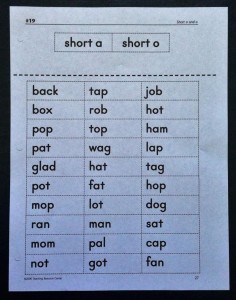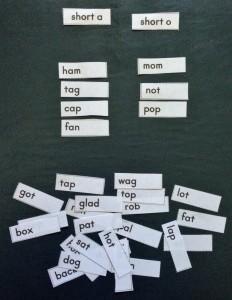by C. Elkins, OK Math and Reading Lady
The National Reading Panel has named five essential components of reading: phonological awareness (which includes phonemic awareness), phonics, fluency, vocabulary, and comprehension. To be a reader, a student must learn how to decode words and also comprehend them. As I encounter students in my consulting practice, many are at a loss regarding ways to decode words and thus fall further and further behind. According to numerous educational articles about the science of teaching reading, teachers are also often feeling they didn’t have the proper background information from their university experiences about how to teach children to read. Plus, many of my subscribers are alternatively or emergency certified and have not had this information presented to them either. Check out this article. Notice how explicit phonics instruction is a central focus: https://www.nctq.org/blog/The-Science-of-Teaching-Reading
Most reading classrooms utilize a balanced literacy model, trying to devote an equal amount of time to the above 4-5 components. Often times due to time constraints, phonics is “covered” through the spelling lessons or through individualized computer programs. This is not enough. Many commercial reading series provide some phonics instruction, but the lessons are often not to-the-point, rely too much on worksheets, and have too much teacher talk (in my opinion). Many teachers with whom I work have expressed they don’t feel adquate in their attempts to help students beyond saying, “sound it out.”
So let’s see if we can tackle this beast for the next few posts. Here’s what I plan to focus on:![]()
- What are the sound / letter combinations students should know?
- Why are letter sounds and spelling them often difficult?
- Do students know the difference between vowels and consonants?
- What is the benefit of helping students know what their lips and tongue are doing as they make various letter sounds?
- What are some of the best rules of phonics?
- How many of the “rules” actually work?
- There are many different ways a student can “sound out” a word. What are they?
- What to do if a student’s only method is to sound out each letter one at a time?
- What role do the 3 cueing systems play in reading instruction. How is phonics involved?
- What are some helpful resources for the teacher as well as the students?
- How often and what should be included in an explicit phonics lesson?
- How can the teacher monitor a student’s progress with regard to phonics knowledge?
- How can the teacher assist the parents so everyone is on the same page regarding helpful strategies?
Here are three wonderful easy to use systematic resources that will help us get started:
 Free phonics lessons:Lots of words (and sentences) to practice each phonics skill. The phonics skill is also explained.
Free phonics lessons:Lots of words (and sentences) to practice each phonics skill. The phonics skill is also explained.
Free video phonics reading lessons:Watch the blending procedure and practice in short video clips.
Explicit Phonics Lessons (from W. Virginia):These lessons focus on how to physically articulate the sound (where is the tongue, what are the lips doing?) as well as an I do, we do, you do approach. An easy to implement routine.
Reading Routines Part 5: Phonics (OK Math and Reading Lady)This is a previous post of mine. We will revisit some of the comments made there throughout this series.
 Here are 12 decoding strategies you might like. These show various ways to help students break apart, analyze, and relate to known words. I only recommend sounding out words letter-by-letter in a few limited situations. Beginning readers do this to apply newly learned letter-sound knowledge. It is a successful method for cvc words and other small words which follow the phonics rules. However, if this is the child’s main method of reading, it begins to become unproductive and impede fluency. In addition to prompting students for meaning or use of structure (see Fix-it Strategies parts 1 and 2), try some of these strategies to help children decode words.
Here are 12 decoding strategies you might like. These show various ways to help students break apart, analyze, and relate to known words. I only recommend sounding out words letter-by-letter in a few limited situations. Beginning readers do this to apply newly learned letter-sound knowledge. It is a successful method for cvc words and other small words which follow the phonics rules. However, if this is the child’s main method of reading, it begins to become unproductive and impede fluency. In addition to prompting students for meaning or use of structure (see Fix-it Strategies parts 1 and 2), try some of these strategies to help children decode words.
 This means if they try one sound and it doesn’t make sense, to try the other sound the vowel makes. This is a quick prompt without the teacher going into a mini-lesson on vowel rules. As a visual reminder, I flip the palm of my hand from one side to the other.
This means if they try one sound and it doesn’t make sense, to try the other sound the vowel makes. This is a quick prompt without the teacher going into a mini-lesson on vowel rules. As a visual reminder, I flip the palm of my hand from one side to the other.


